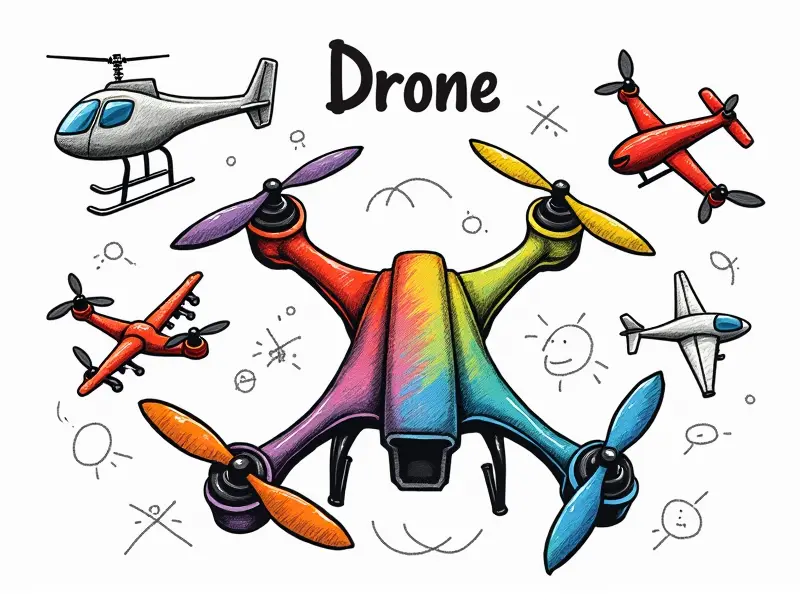Can drones replace technicians?

Are Technicians at Risk from Drones?
The rapid advancement of drone technology has sparked a debate about the future role of human technicians. As drones become more sophisticated and capable, many are wondering if these unmanned aerial vehicles (UAVs) can replace traditional technical jobs. This article explores whether drones pose a threat to technician roles across various industries.
Can Drones Replace Human Workers?
The question of whether drones can fully replace human workers is complex and multifaceted. While drones excel in certain areas, such as aerial inspections and data collection, they still lack the adaptability and problem-solving skills that human technicians bring to the table.
Automation and Efficiency
- Drones offer unparalleled efficiency for repetitive tasks, reducing the need for manual labor.
- The ability of drones to access hard-to-reach areas makes them invaluable in industries like construction and infrastructure maintenance.
Will Drones Make Technicians Obsolete?
Despite their growing capabilities, it is unlikely that drones will completely replace human technicians. The unique skills and expertise required for complex technical work cannot be replicated by machines alone.
Complex Problem Solving
- Technicians often need to diagnose and resolve issues on the spot, a task that requires critical thinking and creativity.
- Drones can provide data and insights but lack the ability to make informed decisions in real-time scenarios.
Drones vs Technicians: A Replacement Debate
The debate around whether drones will replace technicians is ongoing. While there are clear advantages to using drones for certain tasks, the human element remains crucial in many technical roles.
Current Applications of Drones
- Agriculture: Drones equipped with multispectral cameras can monitor crop health and detect issues early.
- Construction: UAVs are used for site surveys, progress monitoring, and safety inspections.
- Infrastructure Maintenance: Drones inspect bridges, power lines, and other critical infrastructure more efficiently than human workers.
Drone Technology: The Future of Technical Work
The future of technical work is likely to see a blend of drone technology and human expertise. As drones become even smarter and more capable, they will take over routine tasks, freeing up technicians for higher-level responsibilities.
Innovative Solutions
- AI Integration: Integrating artificial intelligence with drones can enhance their capabilities in data analysis and decision-making.
- Remote Monitoring: Drones equipped with high-resolution cameras and sensors enable real-time monitoring of equipment and facilities.
Drones in Maintenance: Replacing Human Hands?
The use of drones for maintenance tasks is becoming increasingly common. However, the idea that they will replace human hands entirely is premature. Drones can complement technician work but cannot fully replicate it.
Advantages and Limitations
- Advantages: Cost-effective, safer for dangerous tasks, faster data collection.
- Limitations: Limited battery life, weather-dependent operations, inability to perform physical repairs.
Are Drones Ready to Replace Techs?
The readiness of drones to replace technicians depends on the specific industry and task at hand. While some applications are well-suited for drone use, others require human oversight and intervention.
Industry-Specific Considerations
- Telecommunications: Drones can inspect cell towers but cannot perform necessary repairs without human assistance.
- Pipeline Inspection: UAVs are excellent for aerial surveys, but they cannot replace the detailed inspection work done by technicians on the ground.
Can Drones Outperform Human Technicians?
In many cases, drones can outperform human technicians in specific tasks due to their speed and accuracy. However, they fall short when it comes to complex problem-solving and decision-making.
Data Collection vs Analysis
- Data Collection: Drones excel at collecting large amounts of data quickly and efficiently.
- Data Analysis: Human technicians are better equipped to interpret this data, identify trends, and make informed decisions based on it.
Will Drones Take Over Technician Roles?
The likelihood of drones completely taking over technician roles is low. Instead, they will likely augment the work done by human technicians, allowing them to focus on more complex tasks.
Collaborative Workflows
- Data Sharing: Drones can provide real-time data that technicians use for decision-making and planning.
- Risk Reduction: By handling dangerous or repetitive tasks, drones reduce the risk of injury to human workers.
Drives Eclipsing Traditional Tech Roles?
The potential for drones to eclipse traditional technician roles is limited by their current technological constraints. While they can perform certain duties more effectively than humans, there are still many areas where human expertise remains essential.
Skill Set Requirements
- Technical Skills: Technicians need advanced skills in troubleshooting and repair that drones cannot replicate.
- Soft Skills: Communication, collaboration, and interpersonal skills are crucial for effective teamwork, which drones lack.
The Rise of Drones: New Threat to Tech Jobs?
The rise of drone technology does present a new challenge for traditional technician roles. However, it also presents opportunities for growth and innovation in the field.
Job Market Evolution
- New Job Roles: The proliferation of drones is creating new job opportunities in areas like drone piloting, data analysis, and maintenance.
- Adaptation and Training: Technicians can adapt to the changing landscape by acquiring skills related to drone technology and AI integration.
Conclusion
The question of whether drones will replace technicians is complex and multifaceted. While drones offer significant advantages in efficiency, speed, and safety for certain tasks, they are unlikely to fully replace human expertise. Instead, the future likely holds a collaborative environment where drones augment the work done by technicians, allowing them to focus on more complex and critical responsibilities.

